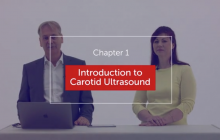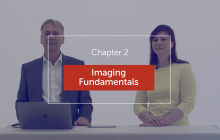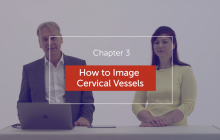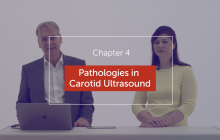Carotid Ultrasound MasterClass
The Carotid Ultrasound Masterclass is a video-based online teaching course (10 hours) that covers the entire spectrum of carotid and vertebral artery ultrasound. The target groups are; vascular sonographers, internists, cardiologists, radiologists, angiologists, neurologists, vascular surgeons, and all health care professionals involved in the diagnosis of cerebrovascular disease.
In over 10 hours (6 chapters and 23 lectures) this course covers topics such as fundamentals of imaging and scanning, the anatomy of the extracranial vessels, differentiating the external from the internal carotid artery, risk assessment for coronary artery disease and stroke, quantification of intima media thickness and stenosis and other diseases of the carotid and vertebral arteries (i.e. dissection, subclavian steal syndrome, vertebral artery stenosis, and hypoplasia). The course will allow trainees to diagnose pathologies and understand the consequences of their findings. They will be able to decide when alternative imaging modalities such as MRI, CT and digital subtraction angiography are necessary and which therapeutic options we have. A specific chapter is dedicated to therapy (best medical therapy, endarterectomy, and stenting). Here the trainees will learn: What “best medical therapy is, which role lipid-lowering therapy and platelet inhibitors play, how endarterectomy and stenting are performed, and what the advantages and complications of these techniques are. The course is conducted by experts in the field of vascular sonography, angiology, cardiology, radiology, and vascular surgery and includes imaging demonstrations, cases, animations, operative videos, and documentaries on atherosclerosis and stroke.





